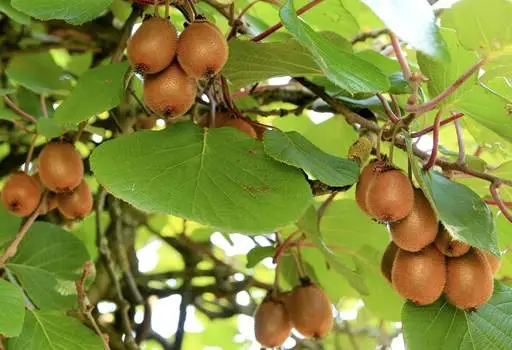Growing kiwi trees at home, especially in pots, can be a rewarding experience if you follow the right steps. Kiwi vines are vigorous and can be a bit demanding, but with the proper care, you can enjoy fresh, home-grown kiwis. Here’s a guide to help you get started with pot cultivation:
1. Choosing the Right Variety
- Hardy Kiwi (Actinidia arguta): Also known as baby kiwi, it’s a smaller, sweeter variety that can be grown in cooler climates.
- Fuzzy Kiwi (Actinidia deliciosa): The traditional kiwi with fuzzy skin, needs a warmer climate.
2. Selecting a Pot
- Size: Choose a large pot, at least 18-24 inches in diameter and depth. Kiwi roots need plenty of space.
- Material: Use pots made of durable materials like ceramic, plastic, or wood with good drainage.
3. Soil Preparation
- Type: Use a well-draining potting mix. A mix designed for citrus or a blend of peat, compost, and perlite works well.
- pH: Aim for a slightly acidic to neutral pH (6.0-7.0).
4. Planting
- Timing: Plant kiwi in early spring or late fall, when temperatures are milder.
- Spacing: If planting multiple vines, space them at least 6-8 feet apart.
- Depth: Plant the kiwi at the same depth it was in its nursery pot.
5. Providing Support
- Kiwi vines are climbers and need support to grow properly. Install a trellis, arbor, or some form of vertical support in the pot.
6. Watering
- Frequency: Keep the soil consistently moist but not waterlogged. Kiwi vines prefer a moderate amount of water.
- Method: Water deeply when the top inch of soil is dry. Ensure the pot has drainage holes to prevent root rot.
7. Fertilizing
- Type: Use a balanced fertilizer (e.g., 10-10-10) or one formulated for fruiting plants.
- Timing: Feed the plants every 6-8 weeks during the growing season (spring and summer). Reduce feeding in the fall and winter.
8. Pruning
- Training: Train the vine to grow along the support structure.
- Timing: Prune in late winter or early spring before new growth starts.
- Technique: Remove dead or weak growth and shape the vine to maintain a balanced structure.
9. Pollination
- Varieties: Most kiwi varieties require cross-pollination. Plant both male and female vines (one male for every 6-8 females).
- Flowers: Kiwi vines produce flowers in late spring to early summer. The male flowers produce pollen, while the female flowers need it to produce fruit.
10. Pest and Disease Management
- Pests: Watch for common pests like aphids, spider mites, and scale. Use insecticidal soap or neem oil if needed.
- Diseases: Keep an eye out for fungal infections or root rot. Proper watering and good air circulation can help prevent these issues.
11. Harvesting
- Timing: Kiwi fruits typically ripen in late fall. They should be firm when harvested and will soften off the vine.
- Method: Harvest kiwis when they are slightly under-ripe. Store them at room temperature until they soften, then refrigerate.
12. Winter Care
- Protection: In colder climates, protect the vines from frost by bringing the pot indoors or covering it with a frost cloth.
- Dormancy: Kiwi vines may lose their leaves in winter and go dormant. Reduce watering during this time.
By following these guidelines, you can successfully grow kiwi trees in pots and enjoy the unique taste of home-grown kiwis. Happy gardening!
